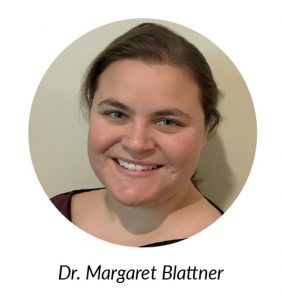While sleep seems “quiet and restful”, it is, in reality, an active process and involves complex neurophysiology, engaging a number of brain systems. This multi-component physiology leads to restful sleep night after night but also presents multiple vulnerabilities that can lead to sleep disruption and excessive daytime sleepiness. Healthy sleep is important for physical and mental health. Even one night of disrupted sleep can impact mood, memory, and  performance the next day. In addition, chronic disruptions in sleep impact health and wellness long-term.
performance the next day. In addition, chronic disruptions in sleep impact health and wellness long-term.
Often sleep scientists think about the regulation of sleep and wake as two connected processes: the sleep homeostatic drive (often referred to as Process S) and the circadian rhythm (Process C). Process S is based on the principle that the longer a person is awake, the sleepier they become (and, conversely, the longer one has been sleeping, the lower the sleep drive). Sleep drive is highest at the end of the day and is increased by sleep deprivation (due to things like study, work, taking care of children overnight, or illness). Sleep drive can also be diminished by taking a mid-day nap. Process S also decreases throughout the night while sleeping. It tends to be lowest in the morning; people usually find it easier to fall back to sleep after waking up early in the night rather than late in the night.
This sleep homeostatic drive is impacted by even mild sleep deprivation. For example, getting 7 hours of sleep when a person feels best with 8 hours of sleep can cause sleepiness to intrude during the day or at unwanted times. Achieving healthy sleep is difficult when this process is impacted by pathological sleep deprivation, such as chronic insomnia and chronic sleep insufficiency due to school, work, or family responsibilities. Process S does not switch off immediately on waking up, causing a sluggishness called “sleep inertia” which usually lasts 15-30 minutes.

In addition to the sleep drive as a determinant of sleep onset and timing, intrinsic daily rhythms also coordinate sleep. Daily patterns in sleep and activity are directed by the intrinsic circadian clock (also called Process C). Nearly every living organism on earth has a daily rhythm of approximately 24 hours set by the earth’s orbit around the sun. The circadian rhythm cues us to feel restful in the evening and feel more awake in the morning; but it also gives our bodies timing cues for many activities ranging from when to eat to when to be at our cognitive sharpest. The circadian rhythm is driven by the brain’s central clock, the suprachiasmatic nucleus, which both sets the time and also responds to cues in our environment to re-set as needed. The central clock in the suprachiasmatic nucleus sends signals throughout the body to keep the whole system in sync.
The strongest of the external cues that keep the central clock aligned to the environment is sunlight. Process C can become dampened in constant dark or light environments (using bright screens at night), in non-sighted individuals, and even seasonally when there are many days without sunshine. Because the central clock serves as both a timekeeper and responds to the environment, the circadian rhythm can respond to changes in the routine—like travel across time zones. The interaction of Processes C and S results in midafternoon sleepiness, which enables a nap.
The suprachiasmatic nucleus not only responds to the environment, but also sets rhythms based on intrinsic neurotransmitters and genetics. Levels of the hormone melatonin, produced by the pineal gland, fluctuate across the day. While melatonin levels typically peak in the evening to promote quiet wakefulness, the timing of this peak is different across individuals: someone with an earlier melatonin peak, the cue to fall asleep is earlier. Someone with a later melatonin peak may not feel like going to bed until late at night (“night owl”). These circadian preferences can be set by daily habits, but may also be genetic. Misalignment between one’s intrinsic daily rhythm and the environment results in feeling sleepy at times that may be inappropriate for study, work, or family responsibilities. Misalignment also seems to be a fundamentally hostile biological stimulus, as it raises blood pressure, inhibits normal blood sugar control, and triggers inflammation.
Multiple neurotransmitter systems orchestrate sleepiness and wakefulness. The orexin neuropeptide (also called hypocretin), produced in the hypothalamus, regulates arousal, wakefulness, and transitioning between sleep stages and wake. Orexin also regulates other neurotransmitter systems involved in coordinating sleep and wakefulness, including dopamine, acetylcholine, norepinephrine, and histamine. Orexin’s role in preventing sleep physiology from intruding into wake accounts for some symptoms seen in narcolepsy. Narcolepsy type 1 is due to a deficiency of orexin, and the episodic loss of muscle tone triggered by emotions (cataplexy) may be due to the paralysis of REM sleep intruding into wake.
Optimally, the sleep drive (Process S) and the circadian rhythm (Process C) align, such that the circadian cue to feel tired (melatonin peak) coincides with the end of the day when the homeostatic sleep drive is highest. Regular sleep and wake routines can promote this alignment and support healthy sleep. Better understanding the complex physiology of sleep and arousal allows us to target therapy for those with sleep disorders and optimize sleep for better health.
………………………………………………………………………………………………………………………………………………………………………………………………………………………………………………….
Margaret Blattner, MD, PhD is a sleep neurologist in the Department of Neurology at Beth Israel Deaconess Medical Center in Boston.



